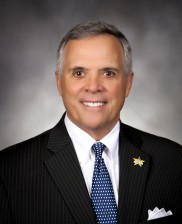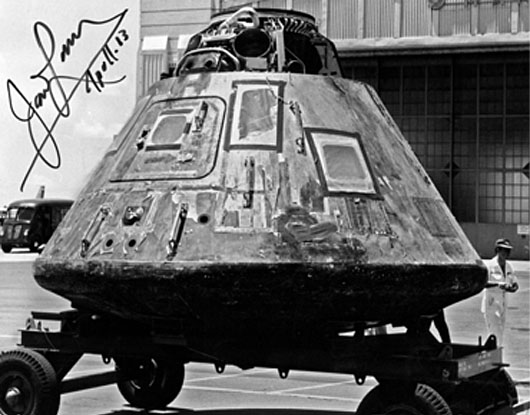 Special to WorldTribune.com
Special to WorldTribune.com
By John McNabb, April 20, 2020
I flew my last sortie just over 50 years ago on April 3, 1970. Or at least I thought it was my last combat sortie in Southeast Asia!
Uncle Sam had already gotten his money out of me as I flew virtually every day from March 1-22 at combat pay of an additional $60 per month.
There was downtime after as plans were made to ferry some aircraft back to Shaw Air Force Base in Sumter, South Carolina.
The eleven months that I spent stationed at Takhli Royal Thai Air Base starting with my first combat sortie on May 11, 1969 had been busy and interesting to say the least.

That first sortie was a passive reconnaissance mission over The Plain of Jars, but it was unforgettable. Approaching midnight on May 11, 1969, the scene was surreal.
To begin with the Plain of Jars surrounded by mountains is literally an ancient burial ground in Laos with massive stone urns or jars that remain an archaeological mystery, some more than 2,000 years old.
I was listening on the Guard Channel as a CIA operative and his team of Laotians were being overrun by Communist Pathet Lao troops.
It was pitch black, but there was a firefight going on. Then the illumination flares lit up the entire area, spiraling in circles as they corkscrewed down.
The voice on the radio calling in air strikes was that of a very young American under extreme stress. His parents may not have known that he was there and with the CIA.
And this was no exercise. There were people down there seriously trying to kill us.
It was my wake-up call. Welcome to a different world, one that was not on most Americans’ radar screen.
My unit the 355th Tactical Fighter Wing was composed of F-105 squadrons, EB-66 squadrons, an air rescue squadron and an intelligence branch. It was an all-male world back in the day.
My EB-66 missions included reconnaissance missions on the North Vietnamese border with Laos or mirroring the North Vietnamese coast north and south in the Gulf of Tonkin from the DMZ to Haiphong Harbor. The active jamming missions included flying with F-105s on interdiction sorties and Surface to Air Missile (SAM) Wild Weasel search and destroy sorties.
My squadron also provided electronic cover for the ever-present B-52 Arc Light bombing missions mainly directed at the Ho Chi Minh Trail.
Takhli was a 24-7 operating base. I would occasionally see U-2 and SR-71 Blackbirds coming and going as well as the CIA’s Air America Inc aircraft.
The 24-7 operations always included a Base Chaplain at the hold for takeoff line as we departed, blessing our aircraft with the Sign of the Cross. Night or day, clear weather or monsoon.
The folks back home knew little of this part of the war effort 50 years ago. My war was the “Secret War” which was untold and deadly. Americans were hearing more about the anti-war protests and the space program.
While at Takhli I saw Neil Armstrong and Buzz Aldrin set foot on the Moon during the Apollo 11 moon mission. Seeing Apollo 11 live on a small black and white television in the Officers Club was a very big deal. There was no internet, no cell phones and almost no current news.
Astronaut Neil Armstrong was very close to the White brothers, Astronaut Ed White and F-105 Pilot Jim White and their parents.
A nice young guy in the 355th was Jim White. His brother Ed White was one of the astronauts who perished during an Apollo 1 test in 1967 at the age of 36. As for Jim, he was piloting an F-105 fighter in a flight of two attacking a communist position on The Plain of Jars in weather. He never pulled out from his attack run. Jim was 27-years-old.
Two great young patriots, both brothers and both graduates of the United States Military Academy.
Back in that period our government would not admit to our presence in Laos. How about this monologue as a parent hearing from Uncle Sam “We are sorry for your loss, but we can’t provide any details of how he died, what he was doing and where he was killed.”
That was President Lyndon Johnson and Secretary of Defense Robert McNamara’s war. It was their way of killing off the best and the brightest. The White House literally decided on our Rules of Engagement. They selected targets and kept the Initial Points and ingress and egress routes the same. American airmen became sitting ducks.
The only present-day U.S. official I can associate McNamara with is the media clown John Brennan. That said, I somehow would like to believe that McNamara at least had some scruples.

On April 3, my last combat sortie, and after the post mission intelligence debriefing, I finished my duties as Squadron Administrative Officer and took a break waiting for a tanker and orders back to Shaw Air Force Base.
I have never been great at hanging out, so my long since departed buddy Rich Bayer (from the Naval Academy) and I took the train down to Bangkok. We knew that when we had a tanker we had to be prepared to launch back to the States.
Days later, I received a call from the squadron watch officer just after midnight that we had a briefing in 7 hours. We would then get airborne and meet a KC-135 Stratotanker and follow it on a flight of three to Anderson Air Force Base Guam in the Mariana Islands.
I got with Rich and overpaid a driver to take us north to Takhli. I made it to the briefing in a Hawaiian flower shirt and shorts, got my gear on and took off. Our flight of three met the tanker off the Vietnamese coast in the South China Sea, and we followed the big bird getting interval refuelings to Guam for a layover and then hooked up with another tanker and followed that big bird to Hawaii.
I knew that Apollo 13 had departed on its Lunar Mission. But news was spotty in country. The Apollo 13 mission departed Florida on April 11 and had the “Houston, we’ve had a problem” moment.
American ingenuity, guts, technology, and sheer luck combined to bring home astronauts Jim Lovell, Fred Haise and Jack Swigert. The Aquarius spacecraft landed safely in the Pacific Ocean near Samoa on April 17, and was pulled to safety by the USS Iwo Jima and transported back to Hickam Air Force Base Hawaii just on the south side of Pearl Harbor. The Aquarius spacecraft reached Hawaii on April 24, 1970.
I landed at Hickam Air Force Base soon afterwards and walked down the flight line on my right. To my left were the magnificent pre-World War II concrete hangars all damaged but never repaired as a reminder of the cowardly Dec. 7, 1941 Japanese surprise attack on Pearl Harbor.
As I neared Hanger 5, I saw two Air Policemen standing guard and do-not-cross tape across the hangar opening. I asked, “Sergeant what is that?”
“Sir that is Apollo 13. They just brought it in,” he replied. The space capsule looked the worse for wear and was resting on a black metal platform. I don’t know how many people had laid eyes on Aquarius but not many. It was heading home to Houston
I will never forget that experience looking over my left shoulder. That mental image served as closure of sorts.
My tour was complete: 103 combat sorties over North Vietnam, Laos and the Gulf of Tonkin in eleven months. And I was also going home. As fate would have it, I would be back in the saddle in Southeast Asia ten-and-a-half months later.
Welcome back to The Plain of Jars, dirty and deadly Tchepone, Laos and Mu Ghia and Ban Karai Passes, North Vietnam.
And then, once again returning stateside to protesters and university punks who didn’t know which end was up. And still don’t.
Many of us were never thanked for our service. I will never forget that.
John T. McNabb is co-founder of the Trump Leadership Council and former chairman and CEO of Willbros Group. He also serves as chairman of the Free Press Foundation Advisory Board and co-chair of Council for a Secure America.
